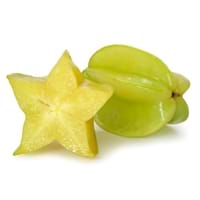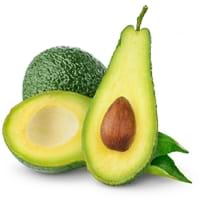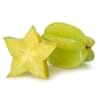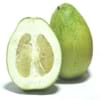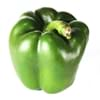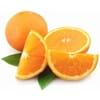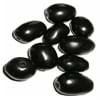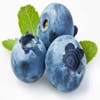Health Benefits
Cancer prevention, Heat stroke treatment
Cancer prevention, Natural detoxification, Osteoporosis prevention, Protection from chronic disease
General Benefits
Anti oxidant properties, Anti-inflammatory properties, Digestive aid, Maintains healthy cholesterol level, Treatment of sore eyes
Boosts immune system, Controls blood pressure, Digestive aid, Improves eye vision, Maintains healthy cholesterol level
Skin Benefits
Anti-aging benefits, Heals sunburn, Skin rejuvenation
Brightens and lightens complexion, Reduces wrinkles, Skin cleansing, Treatment of dark spots
Hair Benefits
Promotes longer and healthier hair, Protects hair
Acts as moisturizer, Good conditioner, Protects hair, Regulates hair growth, Rejuvenates scalp, Remedy for split ends, Shiny hair, Softening mask
Allergy Symptoms
NA
Abdominal pains, Anaphylaxis, Inflammation, Itching, Latex Allergy, Nasal congestion, Skin Rashes, Swallowing difficulties, Swelling, Upset stomach, Vomiting, Wheezing
Side Effects
Nausea, Vomiting
Allergic reaction, Hypersensitivity, Weight gain
Best Time to Eat
As a snack in the late afternoon, Eat the fresh ones, avoid mixing with any other foods, don't eat after meal., Strictly avoid empty stomach
Along with meal, As a snack in the late afternoon, Don't consume at night and before bed, Don't eat after meal
Vitamin B5 (Pantothenic Acid)
Vitamin C (Ascorbic Acid)
Vitamin K (Phyllochinone)
Phytosterol
Not Available
Calories in Fresh Fruit with Peel
Calories in Fresh Fruit without Peel
Not Available
Not Available
Calories in Frozen Form
Not Available
Calories in Canned Form
Not Available
Not Available
Calories in Jam
Not Available
Calories in Pie
Not Available
Type
Tree fruit
Berry, Tree fruit, Tropical
Season
Autumn, Spring, Summer
Summer
Varieties
King, Bell, Sri Kembangan, Arkin and Fwang Tung
Bacon, Fuerte, Gwen, Hass, Lamb Hass, Pinkerton, Reed and Zutano
Color
Golden yellow, Green
Dark green
Inside Color
Yellowish Green
White
Shape
Oval and Star(Cross section)
Oval
Taste
Crisp, Juicy, Sweet
Buttery
Origin
Sri Lanka
Mexico, Central America
Grows on
Not Available
Trees
Soil Type
Loam, Well-drained
Decomposed Granite, Limestone, Sandy loam, Well-aerated
Climatic Conditions
Moist, Warm to hot climate
Humid, Without frosts
Facts about
- When carambola is cut horizontally, it forms a star.
- It is believed that carambola helps to cure hangover.
- Entire carambola is edible, including its skin.
- 2 varieties of carambola are cultivated: tart & sweet.
- The oldest living avocado tree is found in University of California and was planted in 1879.
- Avocados can be swapped for butter in Baked Goods Recipes.
- Avocado ripens more quickly with a banana or an apple around.
Top Producer
Taiwan
Mexico
Other Countries
Australia, Guyana, India, Israel, Malaysia, Philippines, United States of America
Chile, China, Colombia, Dominican Republic, Indonesia, Kenya, Mexico, Peru, Rwanda, United States of America
Top Importer
Europe
United States of America
Top Exporter
Malaysia
Mexico
Botanical Name
Averrhoa carambola
Persea Americana
Synonym
Not Available
Persea Gratissima
Subkingdom
Tracheobionta
Tracheobionta
Division
Magnoliophyta
Magnoliophyta
Class
Magnoliopsida
Magnoliopsida
Subclass
Rosidae
Magnollidae
Order
Oxalidales
Laurales
Family
Oxalidaceae
Lauraceae
Species
A. carambola
P. Americana
Generic Group
Not Available
Laurel
Difference Between Carambola and Avocado
We might think that Carambola and Avocado are similar with respect to nutritional value and health benefits. But the nutrient content of both fruits is different. Carambola and Avocado Facts such as their taste, shape, color, and size are also distinct. The difference between Carambola and Avocado is explained here.
The amount of calories in 100 gm of fresh Carambola and Avocado with peel is 31.00 kcal and 160.00 kcal and the amount of calories without peel is Not Available and Not Available respectively. Thus, Carambola and Avocado belong to and category.These fruits might or might not differ with respect to their scientific classification. The order of Carambola and Avocado is Oxalidales and Laurales respectively. Carambola belongs to Oxalidaceae family and Avocado belongs to Lauraceae family. Carambola belongs to Averrhoa genus of A. carambola species and Avocado belongs to Persea genus of P. Americana species. Beings plants, both fruits belong to Plantae Kingdom.
